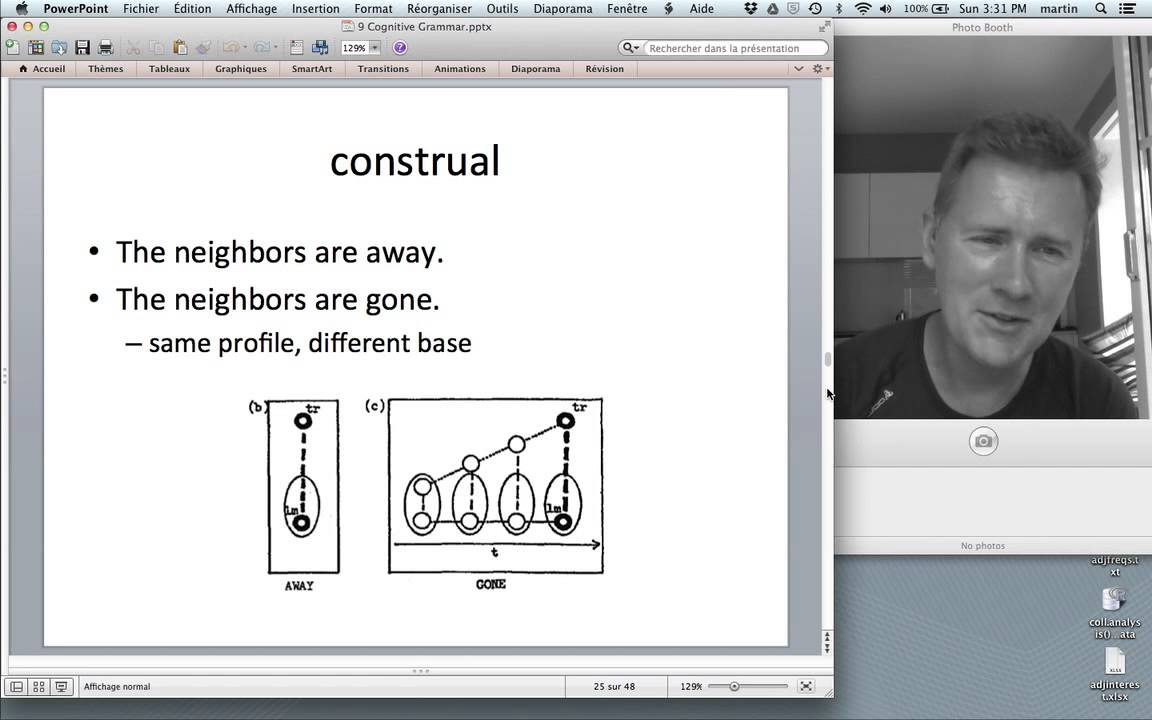Martin Hilpert
This is episode number nine in a course in Cognitive Linguistics. This episode discusses Ron Langacker’s Cognitive Grammar, which is an approach to grammar that tries to account for the forms and meanings of grammar in terms of domain-general cognitive processes. The video explains several technical terms of the Cognitive Grammar framework, including profile and base, construal, things and relations, elaboration, and trajectory and landmark. .
A course in Cognitive Linguistics: Cognitive Grammar
